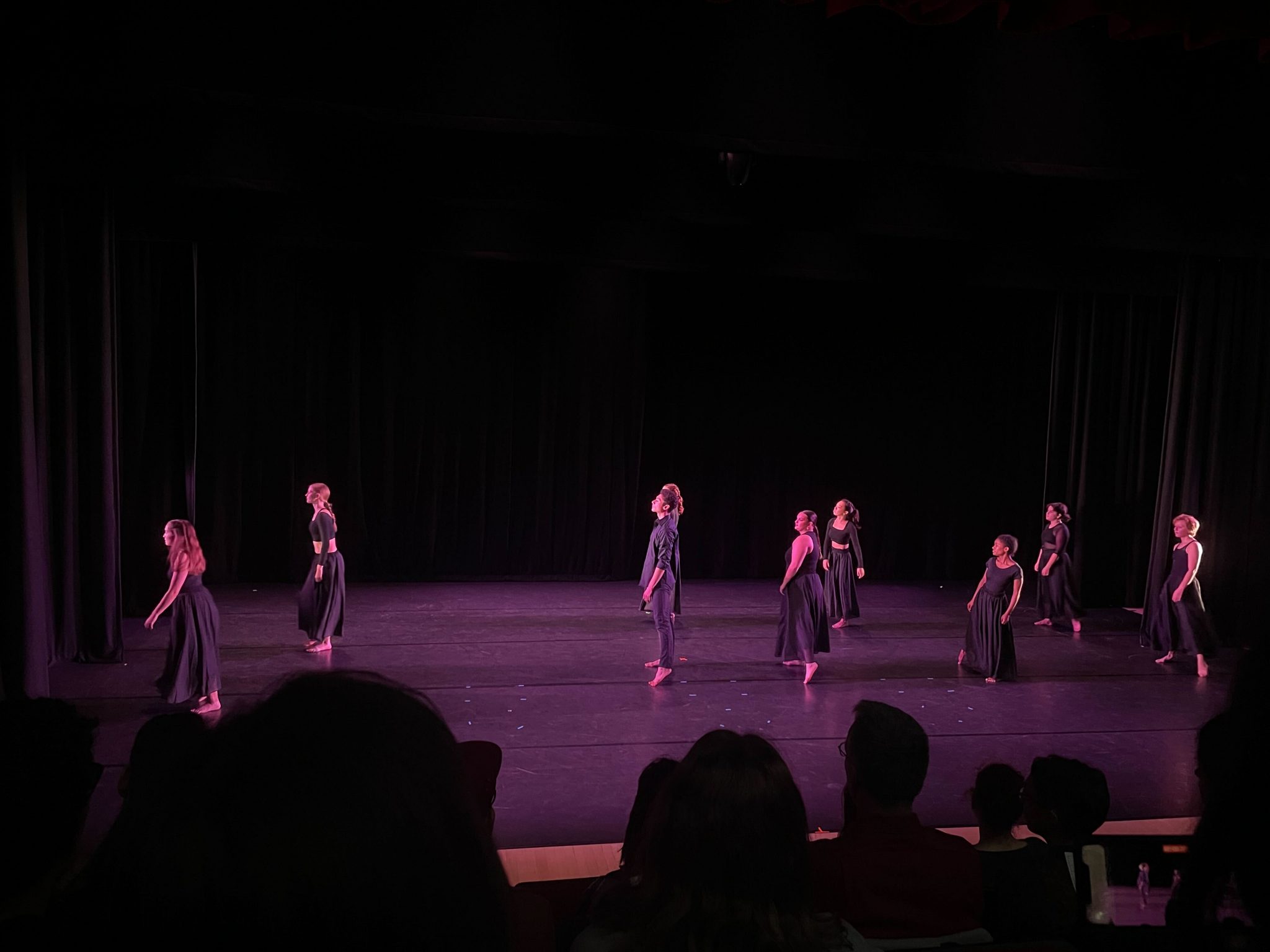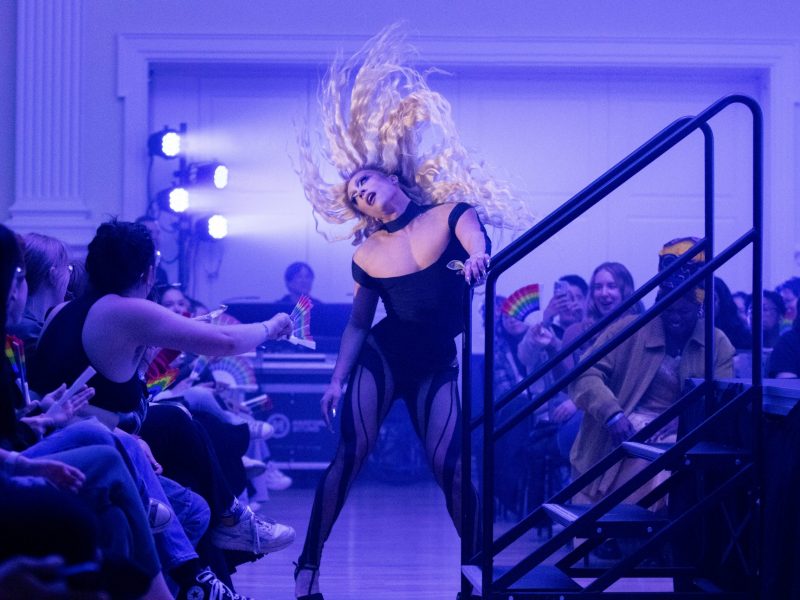The theater, dance and performance studies school showcased undergraduate and graduate student works with an experimental performance series on Saturday at The Clarice Smith Performing Arts Center.
The performances included three pieces ranging from plays to dance performances, each centering on a different topic and giving students the opportunity to showcase their unique choreography.
The first piece, “Here’s To Us,” demonstrated the highs and lows of growing up through teenage years as the dancers, draped in black attire, performed slow, smooth movements.
“I started this right before I was going to turn 20,” said Alondra Torres Negron, a junior communication and dance major and choreographer of the piece. “[Being a teenager] is being able to get through all of the tough times and the people that allow you to grow and are just with you every step of the way.”
The music crescendos as the piece progresses, creating emotionally charged movements fueled by a Phoebe Bridgers song. The finale concludes with dancers letting out a chaotic roar toward the audience. The piece ends with silence, followed by a structured bow by the performers.
[UMD alum transforms home into solo art exhibition]
Torres Negron found that she discovered a key part of her creative process for the piece through the accompanying music.
“Music is a big part of everything. Every time you see me, I have a pair of headphones on,” Torres Negron said. “I just kind of found music that would inspire me and represent what I was going through at certain points.”
The second piece, “Rainbow Bridge,” centers on a Facebook group where people pretend to be their dogs to escape reality and realize one of their members is AI-generated.
The performance is powered by digital facial motion capture of the actors to create their dog personas, as well as of the AI member, Charlie, who is only ever shown as an animated dog in the background. The play’s script uses ChatGPT to represent the voice of Charlie as an AI-generated character.
“I have been really interested, for the last couple of years, in creating pieces of theater that are digitally intentional, meaning that they incorporate either stories about technology or they require technology to be performed,” said Leo Grierson, a multimedia design master’s student and the playwright of “Rainbow Bridge.”
[‘The Devil on Trial’ re-examines 1981 supernatural murder case]
The final work of the night put a technical spin on dance with the incorporation of math and physics. “The Spectrum” uses movement to discuss the ideas and imbalance of positive and negative infinity.
The piece incorporates a simple timeline in the background, scaling from negative to positive moments. Performers use movement to represent the ideas of each moment, with erratic, sharp and jolting movements paired with a smile used to represent positivity and negative events represented by slow, drawn out and dreary movements.
Gaya Shechter, a dance and management major and the choreographer of “The Spectrum” researched the idea that “anything in life can be thought of as a spectrum,” with math and physics professors, she said.
She said that anything too far on either side of the spectrum is unhealthy.
The performance series has allowed students in the department to present unique ideas through their work and to conceptualize new forms of art. “It’s been really nice to be able to collaborate with the other creators in the performance series and how we’ve been able to be there for each other and to just see how everybody’s work is so different and how everyone’s creative process has been different,” Torres Negron said.



